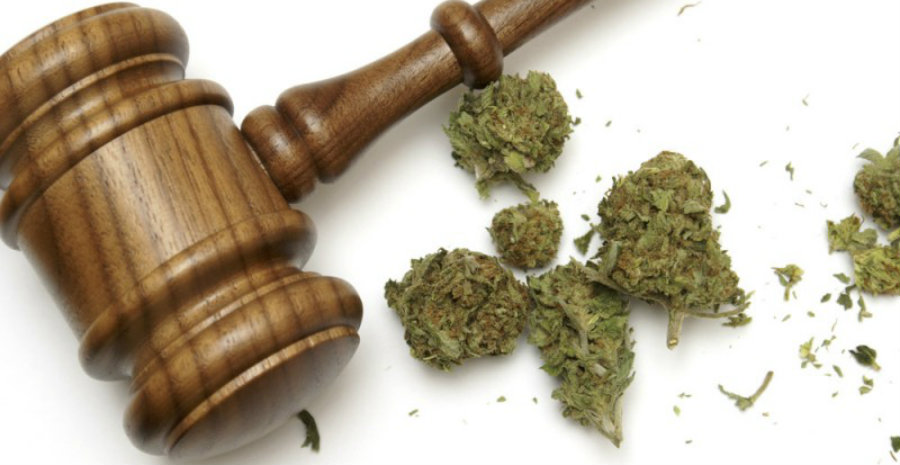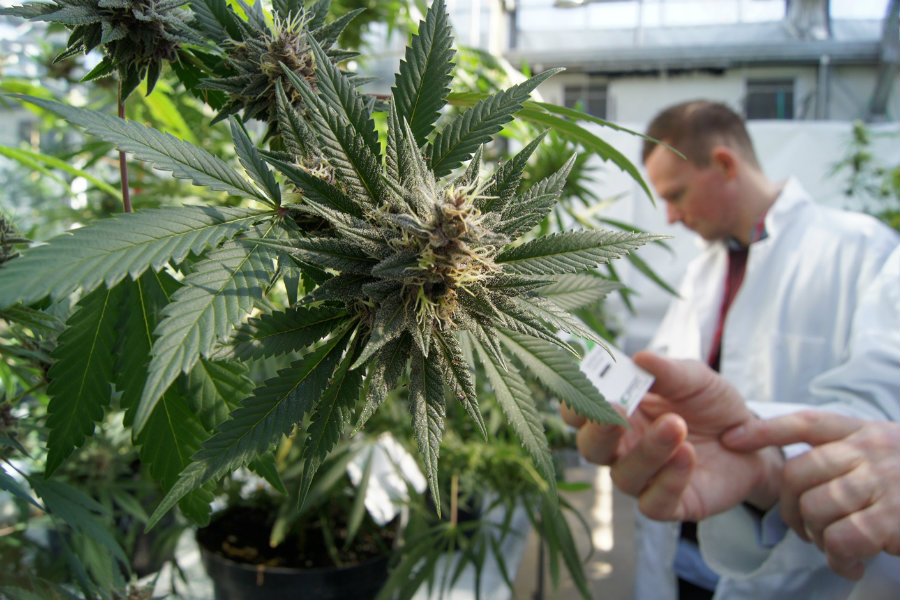The Drug Enforcement Administration (DEA), announced its rejection on moving Marijuana from Schedule 1 of the Controlled Substances Act on Thursday. Marijuana’s position in the Act classifies it as an ‘extremely dangerous substance’ that has no medical use.
Two requests were issued to the DEA to remove the drug from such classification, one of them was published by the governors of Washington and Rhode Island. While the other was made by Bryan Krumm a New Mexico resident and psychiatric nurse, who uses cannabis to treat Post-Traumatic stress patients.

The DEA denied the requests made, after performing scientific and medical evaluations along with the Food and Drug Administration (FDA) and the National Institute on Drug Abuse (NIDA). They confirmed marijuana would remain classified as a Schedule 1 drug, for not meeting the medical standards in the U.S.
“Based on the legal standards in the Controlled Substances Act, marijuana remains a Schedule I controlled substance because it does not meet the criteria for currently accepted medical use in treatment in the United Sates,” wrote the DEA’S Department of Public Affairs in a press release.
The DEA also noted that there’s a lack of accepted safety for using marijuana under medical supervision and that the plant has a high potential for its abuse. However, the DEA did announce a wider opening to requesting and performing studies on the well-accepted plant, to obtain a greater knowledge of its possible benefits or consequences.
What does Schedule I drug mean?
According to the DEA’s Drug Schedules reports, all drugs, chemicals, and substances used in the manufacturing of pharmaceuticals are classified into five categories depending on their medical use.
The risk for abuse is one of the most relevant factors when categorizing a drug within the Schedules. For example, Schedule I drugs are the most dangerous with higher risks of abuse and Schedule V drugs represent the less hazardous drugs. All of the Schedule I drugs, substances, and chemicals are not accepted in medical usage and are categorized as dangerous. Some of this drugs include heroin, methaqualone, peyote, LSD and cannabis.

The petition was made by Governors and the New Mexico resident, who asked the DEA to remove marijuana from the Schedule I drugs’ list and classify it as a Schedule II drug. Marijuana’s downgrade on said list would imply the drug has a potential abuse risk but also has medical benefits for people. Opioids are part of the Schedule II drugs, along with oxycodone, fentanyl, Ritalin, and methadone.
The DEA is part of the Justice Department of the nation and has control over manufacturing and using drugs, allowing the department to determine who can research the drug and in what ways the drug must be employed. To obtain DEA’s approval, scientists and researchers have to endure a long legal process.
A bumpy road toward medical cannabis use
Until now and since 1968, the University of Mississipi was the only educational institution approved by the DEA to grow marijuana for research. The limitation has translated into limited research on the drug’s benefits and consequences.
Having cannabis as a Schedule 1 drug restraints scientists on finding the correct medical usage of the plant, to obtain a DEA approval, researchers also have to knock the FDA’s door for their consent. Mark Kleiman, a veteran drug policy commentator, who takes part in the justice program at NYU’s Marron Institute of Urban Management was recently interviewed by Vice on the DEA’s decision.
Kleiman recalls a request made by the Multidisciplinary Association for Psychedelic Studies, who wanted to understand if vaporizers could produce fewer carcinogens than marijuana joints. The association wanted to perform an experiment, without human subjects, so they asked the DEA and the FDA for 10 grams of cannabis to carry out the investigation. The request took five years to obtain a response and when it did it was a big NO.

Open to research
According to the DEA’s press release, the association assures that due to the high and public interest on knowing the benefits and consequences of marijuana, more permissions will be made to universities and research facilities. This also means that more investigations will be done, thanks to the facilitation of the plant and it could provide answers about the drug more quickly.
Kleiman assures in his Vice interview that despite the DEA’s recent statements, medical use of marijuana is just around the corner because of the legalization of a pharmaceutical that contains cannabis.
A drug called Epidiolex is a medicine about to be approved by the FDA this fall, the medication contains cannabidiol, which is a purified cannabis extract. According to Kleiman, legalizing a drug that contains cannabis is the answer to many effective treatments for plenty of diseases and conditions.
“Opium, for example, is not an accepted medicine but how do you make morphine? You extract it from opium. So if the drug were Schedule I, all those pharmaceutical manufacturers would be breaking the law,” said Kleiman to Vice.
The drug policy commentator explains that opium is classified as a Schedule II drug, because it is used as a medicinal derived but has vast possibilities of developing addiction and abuse. Assuring that marijuana, most likely, will end up being moved to Schedule II. Marijuana has been slowly entering the medicinal world, in the last decade there has been a greater approach to the benefits of the drug and more states and countries are opening to the plant.
Source: DEA
